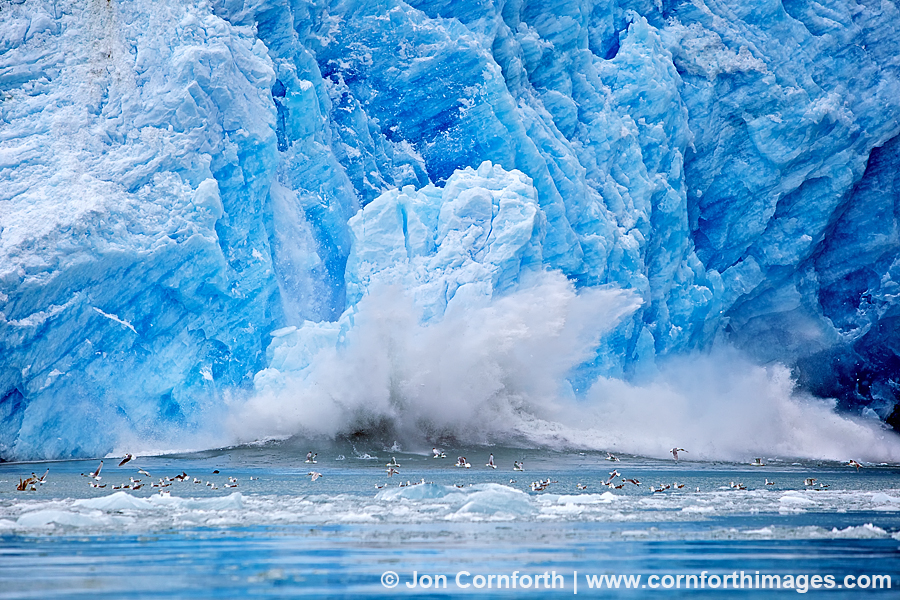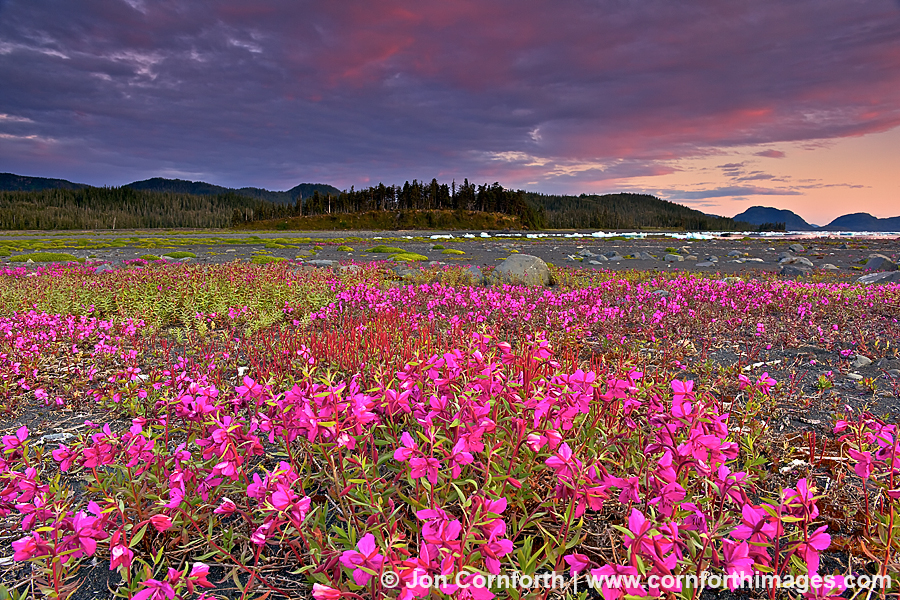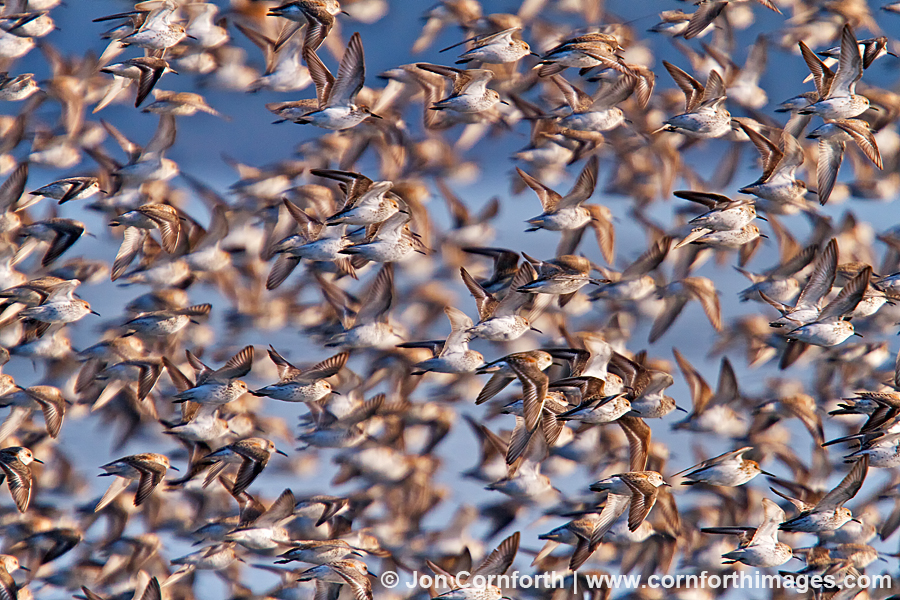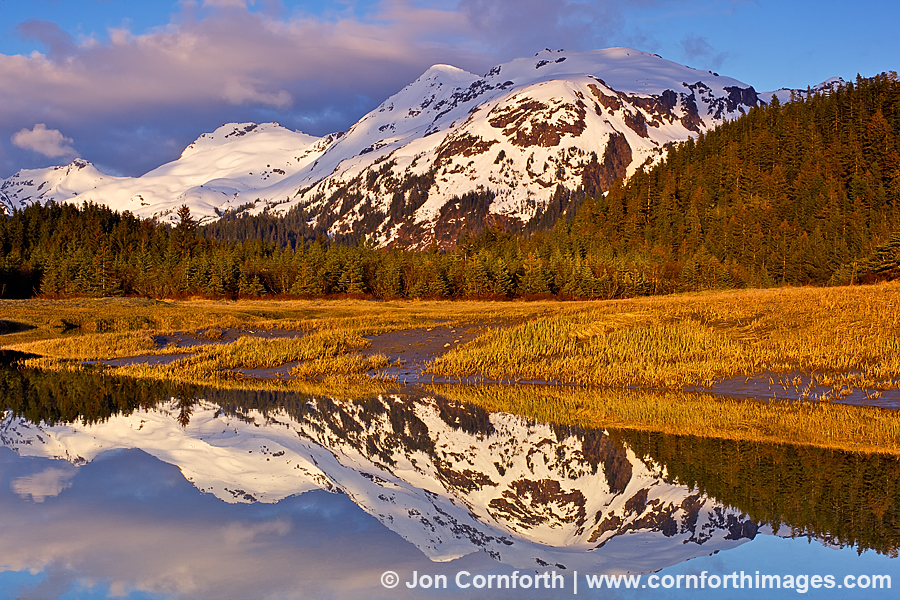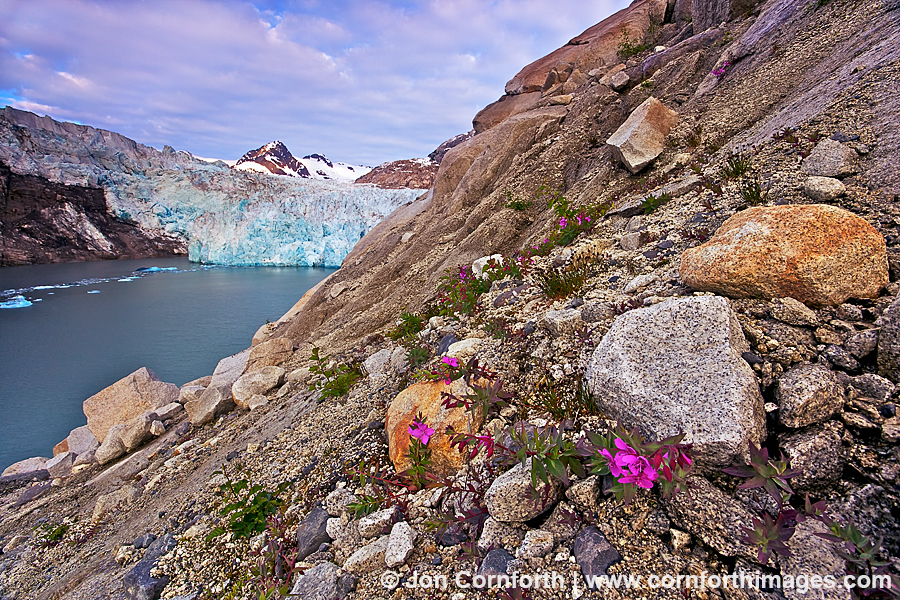
Nellie Juan Glacier Dwarf Fireweed 1
Posted onI photographed this rugged scene while cruising Prince William Sound with my dad in late June. I had scouted Nellie Juan Fjord several days earlier in rainy conditions and observed a few dwarf fireweed blooms high above the tideline on the granite cliffs. In order to get to this location, I woke up well before sunrise, navigated my inflatable boat through hazardous submerged rocks guarding the entrance to the fjord, motored through tons of floating ice, and finally tethered my inflatable to the base of a soaring rock wall. I then scrambled high above the water to get to this precarious perch. Once I was in place, I was fortunate to experience perfect landscape photography conditions with clear sky to the east and a few clouds hovering over the mountains to the west. I created this image with my Canon 5DmkII, 17-40mm f4 lens, Singh-Ray LB Warming polarizer, and 4-stop Soft Graduated Neutral Density filter. This image is a single-exposure which required minimal processing using Aperture 3 and Photoshop CS5.

